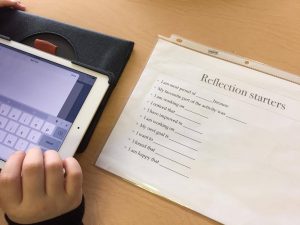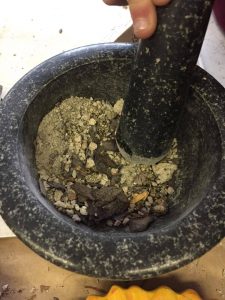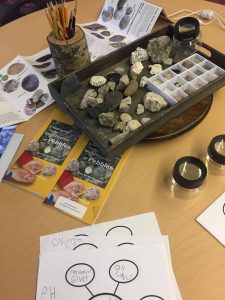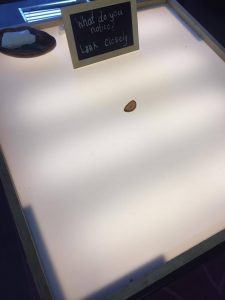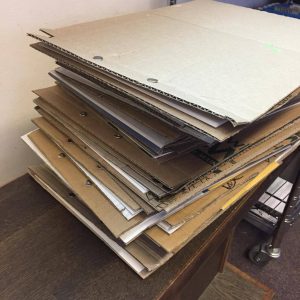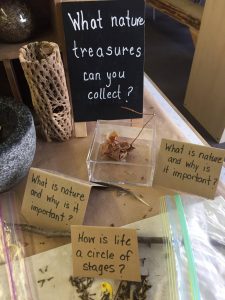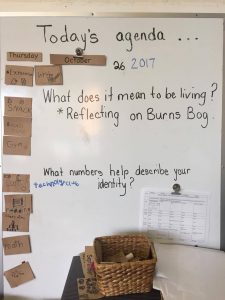Today, the teacher used the sentence frame “I want to highlight on something that I saw during XX time” to start a conversation with the students. The teacher used it as a starting point to emphasize on some positive behaviors that happened earlier, such as inviting friends over to play at a station. The teacher invited the students to think what were some core competencies that we use when we invite our friends. The students were reminded what the three core competencies were. Is it thinking? Communication? Personal and social skills? Or were there more than one of them? Students had a discussion and came up with several great answers.
As a whole class, we agreed that inviting friends would involve all three core competencies. You would have to be brave to go ask someone. It could also be important to think about the way you say your invitation. The students made connections with organizing the writing club, which required some students to visit different classes, make a little speech, and show invitations.
The teacher reminded the students that every time when we take a chance and choose to be kind, that makes us a better friend and a better person. That would also make our school a better place.
This conversation was inspiring for me. I used to find it challenging to communicate core competencies with primary students, but now I have a clearer idea of how to approach that. This type of conversation really invites the students to think about and reflect on these core competencies in a critical way. Students are able to build concrete understandings from abstract concepts and make real connections with their own experience.





